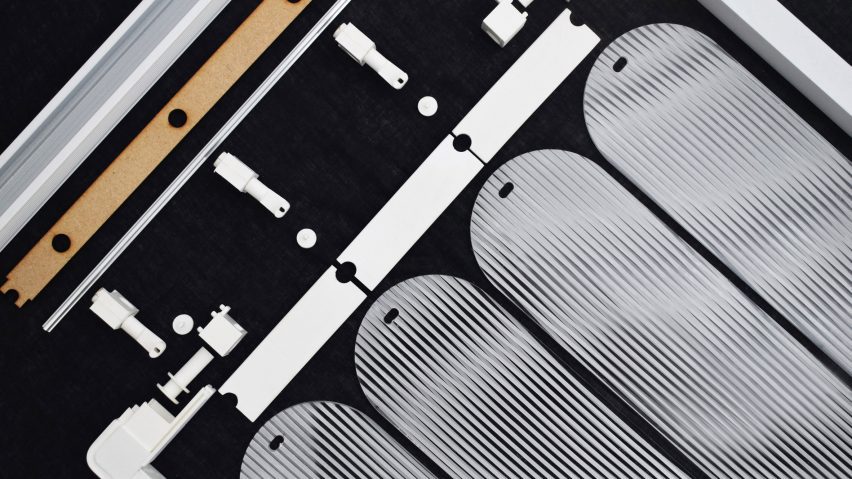Central Saint Martins graduate Saima Fateh has designed a system of automatically closing window blinds that shade the interior when it gets too hot and change colour to signal dangerous levels of UV radiation.
Fateh developed the TranSense Screens as part of her final-year studies on the MA Industrial Design programme at the University of the Arts London's Central Saint Martins art school.
Designed for hot regions, the screens use smart materials to sense shifts in temperatures and limit the amount of sunlight entering a room without requiring an electricity supply.
A spring made from a shape-memory alloy called nitinol is activated when the temperature rises to a certain level, prompting the vertical louvres to rotate to the closed position.
Photochromic pigments applied to the external surface of the acrylic panels change colour from white to orange to emphasise the invisible threat of solar radiation.
"The design addresses the emotional cost of disconnecting from the natural elements during extreme weather conditions," said the designer, who grew up in Udaipur, India, where summer temperatures can exceed 40 degrees Celsius.
Fateh chose to employ mechanical, rather than electrical, sensors to activate the blinds to also save on energy use.
The active component in the screen is a single nitinol compression spring fitted within the frame. At cooler temperatures, a tensioning spring incorporated as part of the double-pulley system keeps the louvres open.
When heated to its activation temperature of 30 degrees Celsius through solar gain, the nitinol spring contracts back to its compressed shape, causing the louvres to automatically rotate to the closed position.
The colour-changing surface decoration functions separately from the rotational mechanism and is intended to promote awareness of changes in the UV index so users can plan their activities accordingly.
Heat-activated photochromatic pigments applied to the blinds gradually change colour, adding a further layer of animation that marks the progression of time, light and temperature.
"It brings a sense of wonder into our everyday lives, breathing life into static fixtures," Fateh added.
"By anticipating needs and signalling real-time changes through shifts in form and colour, they form a renewed protective and informative connection."
The acrylic louvres are etched with a moiré pattern inspired by the rippling visual effect of heat wave distortion that appears around hot objects.
The etched pattern adds a semi-permeable quality to the surfaces, allowing light to pass through whilst providing a degree of privacy.
The actuator assembly is designed to fit standard window frames and can be tailored to different sizes. The system can also be easily dismantled for transportation and storage.
The TranSense Screens are designed to operate optimally in locations with high solar radiation, significant day-night temperature differences and a stable annual climate.
Fateh tested the prototype in her hometown of Udaipur, where she was able to document the movement and shadow play created by the screens as the temperature changed throughout the day.
Other innovative window designs include water-filled windows that use sunlight to heat and cool buildings and a "stained-glass" window that can charge mobile phones.

